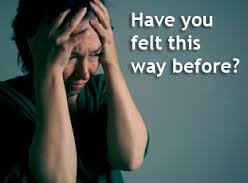Are you debilitated by chronic persistent pain? Turn the volume down with osteopathy

Turn the volume down on chronic persistent pain
When persistent pain is part of daily life
It is only recently that the complexities of chronic pain have been the subject of investigation. As a result, pain medicine is moving into a new era with the deeper insights that are emerging from this research. See the resources listed below.
If you are debilitated by persisting pain, Sandra’s* experience may resonate with you.
Collision course
Sandra brought a multitude of investigations, images and tests to her first osteopathic appointment. As Sandra’s personal story unfolded, it became clear that she had been living with such pain and disability that it had taken over all aspects of her life.
It began when Sandra was 20 years old. She was involved in a car accident as a passenger in the front seat. The collision left her with severe lower back pain. Scans at the time did not indicate structural damage. Her injury significantly improved over the years although there were occasional episodes of acute sharp pain if she sat too long or bent a certain way.
Early last year while skiing, some 2 years after the motor vehicle accident, Sandra fell onto her back, re-aggravating her lower back pain. Ever since that fall her pain would not settle easily. The only way she could get some relief was with strong prescribed pain medication.
Sandra was no longer able to exercise or work full time due to her now persistent pain. She was also unable to have a refreshing night’s sleep. An MRI indicated spinal arthritis and disc herniation in the lower back.
She had been to see “everyone” with no improvement. Her doctor told her it was all in her head. Surgery was recommended by a specialist.
Understanding chronic pain
After a more detailed history and a routine physical movement assessment, it was explained to Sandra that all signs were pointing to the fact that she was suffering from persisting, chronic pain. This is very different to acute pain and therefore requires very different treatment. Continued persisting acute pain signals confluence with our past experiences, cultural underpinnings and meaning of pain to affect changes to the spinal cord and brain. These signals lead to plastic changes to the central nervous system which is the mechanism behind chronic persisting pain.
Turning the volume down
Sandra’s reduced engagement with the world due to her now chronic persistent pain, such as cessation of exercise, cutting back her work hours along with her poor sleep, is common in those suffering from chronic persisting pain, but was also contributing to turning the volume up on her symptoms.
So, in the osteopathic consultation, strategies to turn down the volume on pain were outlined and discussed. These involved continued self-education on chronic pain, returning to paced / dosed general exercise and building her “support dream team”. A support dream team, for example, could include a GP, an acupuncturist to help with pain management, an osteopath to keep the muscles free of spasm and joints mobile and a psychotherapist to explore barriers to the road to recovery.
Was the persistent pain all in Sandra’s head?
When her initial doctor said: “It is all in your head”, he was partially right and partially wrong. It is right in one regard as discussed above, as plastic changes do occur in the central nervous system, but he was incorrect to say “it is all in your head” without contextualising, as it infers blame. Blame does not enable change.
Through pain education, pain management, improved sleep, dosed exercise and building a recovery support team, the outcomes are much more powerful and positive.
Sandra is now swimming and bushwalking again. And though she has bouts of pain, she feels she has the tools now to turn down the volume on her pain and so in doing, turn the volume up on living again.
Vincent King. Osteopath at Wholistic Medical Centre
* Name has been changed
This case study is for educational purposes only. Results may vary due to individual circumstances.
RESOURCES
1) The pain toolkit
Great starting point and practical strategies for implementing the road to recovery plan.
2) Tasmanian Persistent Pain Booklet
http://knowpain.co.uk/wp-content/uploads/2014/05/TazzyPersistentPainBooklet.pdf
3) Pain Australia
Education hub for patients and health professionals on the emerging research of pain.
4) Ted Talk: “Why things Hurt” by Lorimer Moseley
https://www.youtube.com/watch?v=gwd-wLdIHjs
An entertaining exploration of the physiology of pain.
5) Chronic Pain Australia





